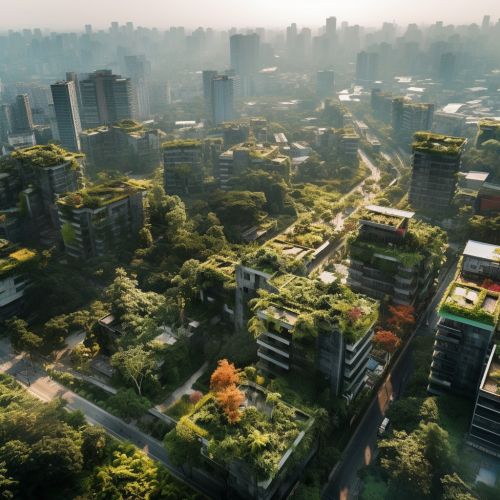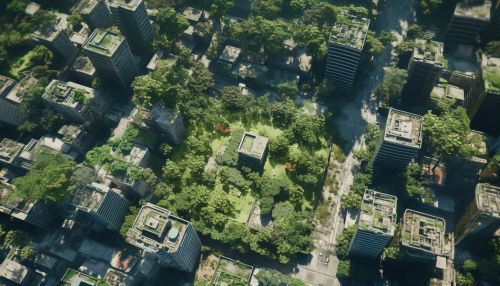Urban Heat Island
Introduction
The Urban Heat Island (UHI) effect is a significant environmental phenomenon that occurs in urban and metropolitan areas. It is characterized by significantly higher temperatures compared to surrounding rural areas, resulting from human activities and the physical characteristics of urban areas. The UHI effect has profound implications on local climate, energy consumption, air quality, and human health.


Causes
The primary cause of UHI is the modification of land surfaces by urban development; buildings, roads, and other man-made structures absorb more solar energy than natural landscapes like forests and water bodies. This increased absorption of solar energy results in the heating of the urban environment, creating the UHI effect.
Urban Geometry
The physical layout of cities, often referred to as Urban Geometry, plays a significant role in the UHI effect. The arrangement and orientation of buildings can create 'urban canyons' that trap heat, reducing the rate of cooling at night.
Materials
The materials used in urban construction also contribute to the UHI effect. Concrete, asphalt, and other common urban materials have high thermal capacities, allowing them to absorb and store heat during the day and release it at night.
Lack of Vegetation
Urban areas typically have less vegetation than rural areas, reducing the cooling effect provided by Evapotranspiration. This lack of vegetation also means that less solar energy is used in photosynthesis and more is available to heat the urban environment.
Impacts
The UHI effect has a range of impacts on both the local environment and the human population.
Climate
UHIs can significantly influence local weather patterns and microclimates. They can increase the intensity of heatwaves in cities, exacerbating their impacts on human health and infrastructure.
Energy Consumption
UHIs increase energy demand for cooling in the summer, leading to higher electricity consumption and associated carbon emissions. Conversely, they can reduce energy demand for heating in winter.
Air Quality
UHIs can exacerbate air pollution by increasing the production of pollutants like ozone. They can also trap pollutants in urban areas by creating a thermal inversion layer that prevents the dispersion of pollutants.
Human Health
Exposure to high temperatures in UHIs can lead to heat-related illnesses and increase mortality rates, particularly during heatwaves. UHIs can also exacerbate respiratory problems due to the increased concentration of pollutants.
Mitigation Strategies
Various strategies can be used to mitigate the UHI effect, many of which involve modifying the urban environment to increase its albedo (reflectivity) and evapotranspiration.
Green Roofs
Green Roofs are roofs covered with vegetation, which can reduce the UHI effect by increasing evapotranspiration and providing shade.
Cool Roofs
Cool roofs are roofs designed to reflect more sunlight and absorb less heat than a standard roof. They can be made using reflective paint, sheet covering, or highly reflective tiles or shingles.
Urban Forestry
Urban Forestry involves the planting and maintenance of trees in urban areas. Trees provide shade and increase evapotranspiration, helping to cool the urban environment.
Urban Planning
Urban planning strategies can also be used to mitigate the UHI effect. These include designing cities to maximize airflow and minimize heat absorption, and incorporating green spaces into urban design.
